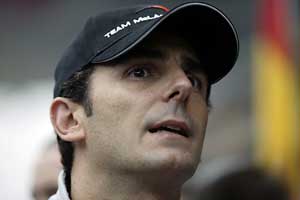SEPTEMBER 14, 2007
Putting the FIA judgement into perspective

The FIA has issued a 14-page judgement from yesterday's World Motor Sport Council hearing. As expected, this includes evidence that suggests that Pedro de la Rosa and Fernando Alonso received specific information from Mike Coughlan and even knew that the information had come from Ferrari's Nigel Stepney. "Hi Mike," De la Rosa wrote to Coughlan on March 21, "do you know the Red Car's Weight Distribution? It would be important for us to know so that we could try it in the simulator. Thanks in advance, Pedro. PS I will be in the simulator tomorrow." De la Rosa confirmed to the World Council that Coughlan replied by text message with precise details of the Ferrari weight distribution but said that it was not tested because it was so different to that of McLaren. A few days later de la Rosa told Alonso about the weight distribution (to two decimal points) and Alonso replied that he was surprised and doubted it was true. De la Rosa replied that the information was reliable. "It comes from Nigel Stepney, their former chief mechanic," he wrote. "I don't know what post he holds now. He's the same person who told us in Australia that Kimi was stopping on lap 18. He is very friendly with Mike Coughlan, our chief designer and he told him that". In addition to this there was other circumstantial evidence regarding other systems and the number of e-mails and SMS messages that passed between Coughlan and Stepney. According to the FIA rules, therefore, the evidence against the team on the charge that McLaren had "unauthorised possession of documents and confidential information belonging to Ferrari" is proven, on the basis that every F1 team is responsible for the actions of all of its employees - and that includes the drivers. The evidence published by the FIA does not prove that the information was used to improve the performance of the McLaren car or that the management of McLaren knew what was going on. These points may not be immediately relevant given the charge, but they are important when it comes to assessing whether the punishment given fitted the crime or whether it was excessive - as many in the F1 paddock seem to think. There are any number of different opinions in F1 circles about whether the judgement is fair but the matter is really down to the McLaren team and its legal advisors and whether they feel it is worth challenging the decision on appeal or in a civil court. There is one other matter which the judgement does not touch upon which could have an effect: the precedents created by FIA judgements in the past. The federation is governed by French law, which is based on the Napoleonic Code. This prohibits judges from exceeding the matter that is being judged and thus in theory there is no case law applied. However while there is no theoretical role for binding precedent in the Napoleonic Code, the courts still use previous cases to help guide the judges. This is an interesting point because in the history of FIA judgements there have been predecents, notably in 1994 when the World Council ruled that the Benetton F1 under Flavio Briatore had illegally tampered with its refuelling equipment to gain an advantage in refuelling. Benetton admitted the charge but the FIA agreed to let the team off the hook because the changes had been made by "a junior employee". As part of the settlement Benetton also agreed to make substantial management changes in the team. The "junior employee" defence was used again a year later by Toyota when it faced charges in rallying but this was rejected on that occasion and Toyota was banned for a year.